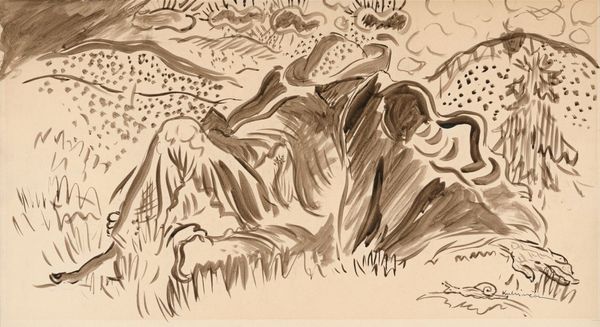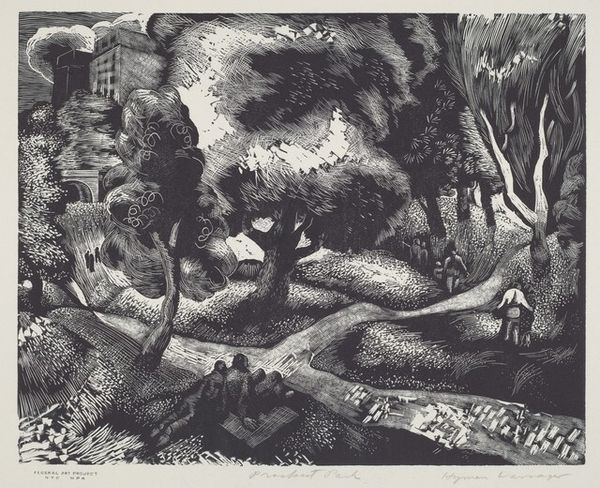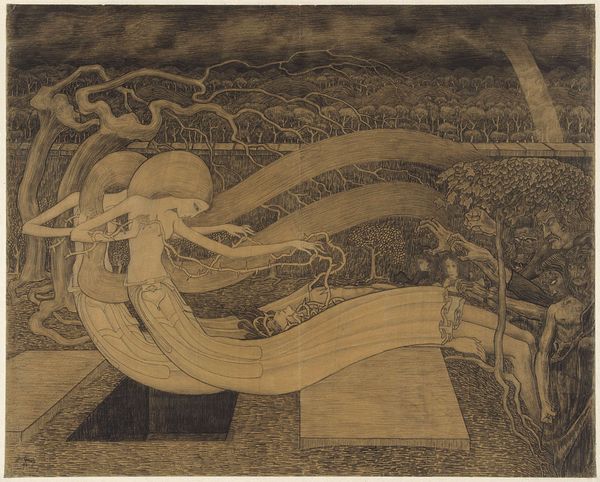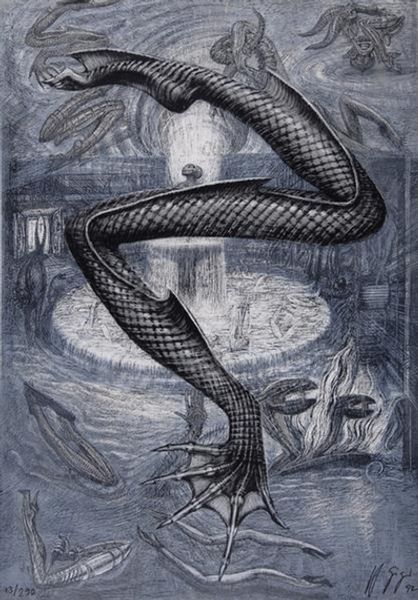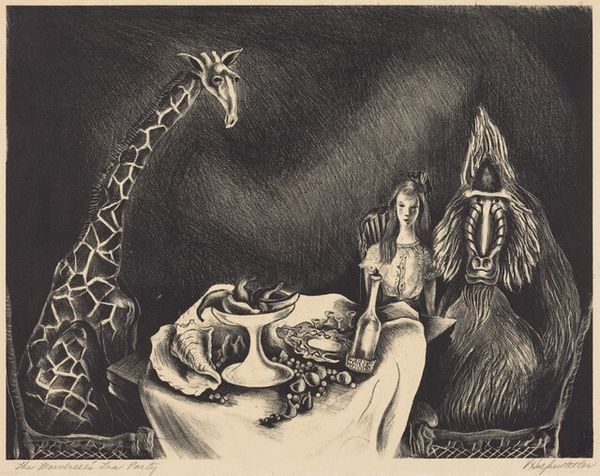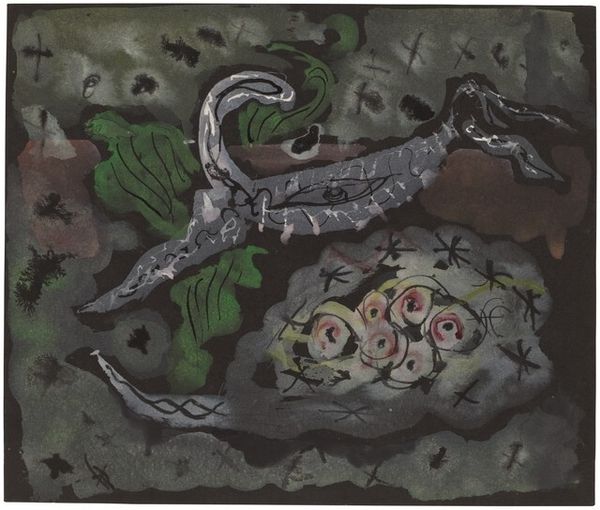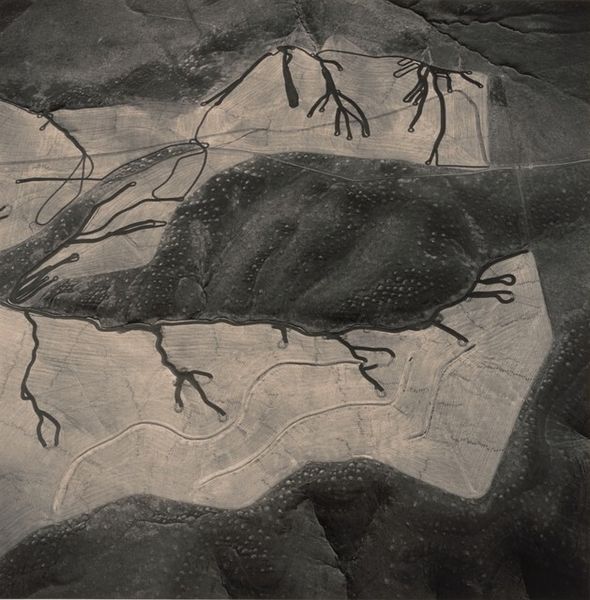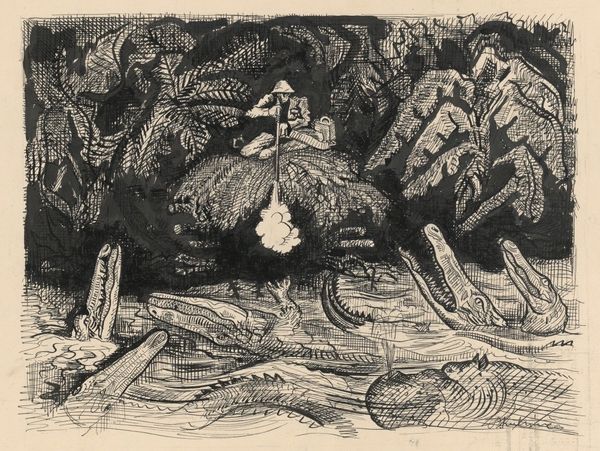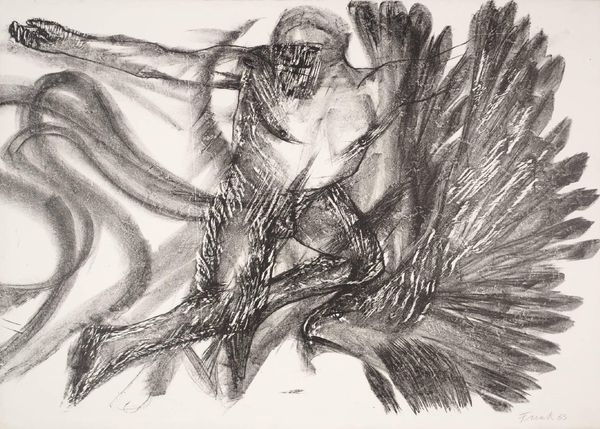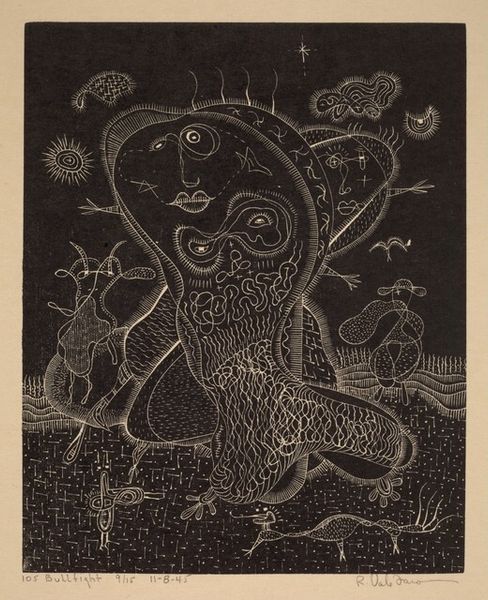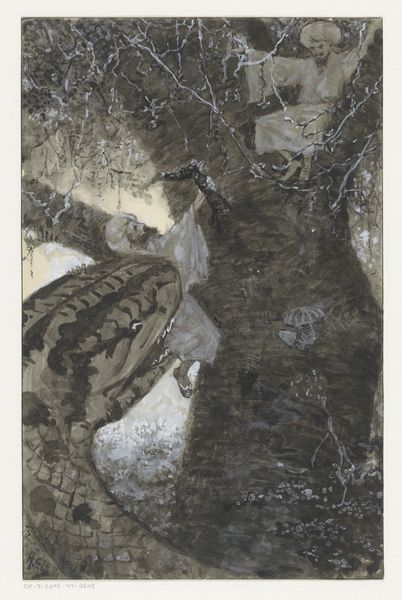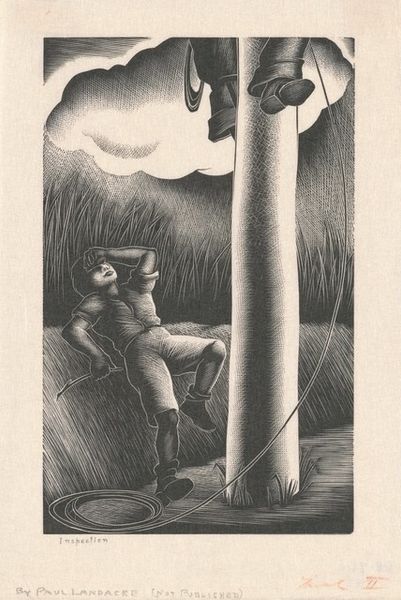
Dimensions: support: 507 x 636 mm frame: 745 x 870 x 30 mm
Copyright: © Estate of John Craxton/DACS 2014 | CC-BY-NC-ND 4.0 DEED, Photo: Tate
Curator: This is "Llanthony Abbey" by John Craxton. The image captures the romantic ruins in a surreal landscape. What do you make of it? Editor: It’s quite striking. The massive tree roots dominating the scene give a sense of nature reclaiming history. There’s a palpable tension between decay and growth. Curator: The Abbey resonates with ideas of religious authority diminished by time and the rise of a new social order. The natural world encroaching acts as a metaphor for political and social upheaval. Editor: I see the formal contrast between the geometric architecture and the organic, almost visceral, lines of the tree. It pulls the eye in different directions, creating a dynamic composition. Curator: Indeed. Craxton made this drawing in the 1940s, placing it amid wartime anxieties and reflecting a broader societal shift. The romantic ruin becomes a symbol of loss and change. Editor: I'm drawn to how the monochrome palette emphasizes texture. The wood grain, stone, and leaves feel so tactile despite the lack of color. Curator: It's a potent image that captures a moment of historical and cultural transition, visualized through its striking contrasts and symbolic weight. Editor: It gives us much to contemplate about nature, time, and art.
Comments
tate 6 months ago
⋮
http://www.tate.org.uk/art/artworks/craxton-llanthony-abbey-t07834
Join the conversation
Join millions of artists and users on Artera today and experience the ultimate creative platform.
tate 6 months ago
⋮
The building in the distance is Llanthony Abbey, a twelfth-century Augustinian house in the Black Mountains in Wales. Craxton was a great admirer of his older friend Graham Sutherland (whose work can be seen in Room 23). Both were among a group of artists in the 1930s and 1940s who drew inspiration from the landscapes of certain ‘visionary’ nineteenth-century artists, particularly William Blake and Samuel Palmer. This ‘Neo-Romantic’ movement was seen by some as a retreat into national tradition at a time of international crisis and war. Gallery label, August 2004

